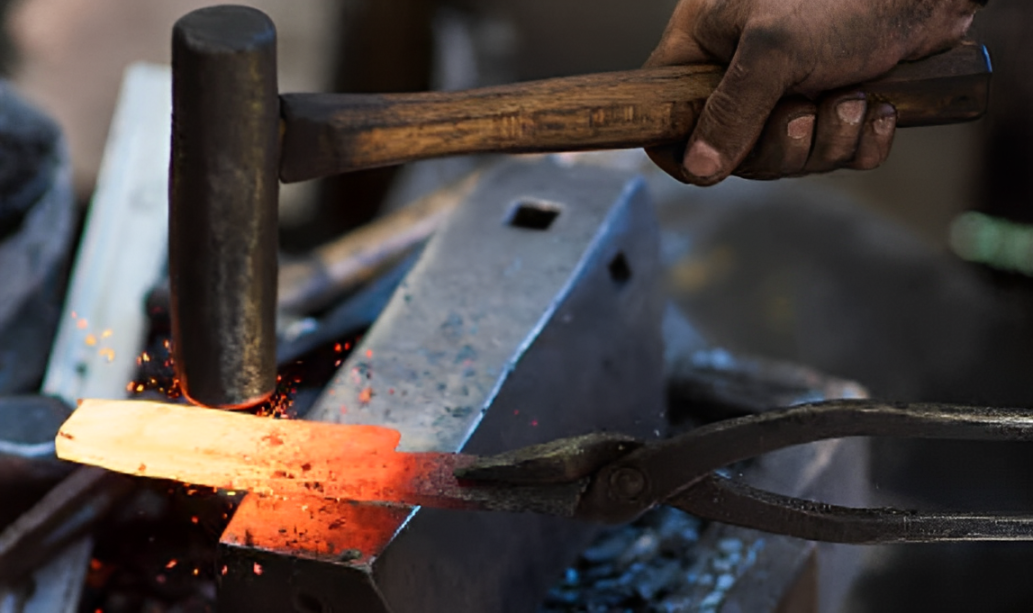
Shipping Information — Crafted with Care, Delivered with Trust
-
At KIREAJI, every order begins not in a warehouse, but in the hands of master craftsmen in Sakai, Japan.
Handles are carefully fitted, blades are inspected, and upon request, the final Honbazuke hand-sharpening is performed. This artisanal process takes time — but it ensures that the knife arriving at your door is not just a product, but a piece of Sakai’s living tradition. -
Shipping Method & Timeline
- Completion & Delivery: Please allow approximately 2–4 weeks for preparation and shipping, as each knife is individually crafted and inspected.
- Tracking: Once shipped, you will receive a tracking number via Japan Post to monitor the journey of your knife.
-

Changing Your Shipping Address
If you need to update your shipping address, please contact our customer service team as soon as possible.
Please note that processing an address change may extend delivery time.
Once an order has been shipped, however, we are unable to change the delivery address. -
Returns & Eligibility
For detailed information, please refer to our Return Policy. If you have questions, our team is here to help through our Contact Us page.
-
Important Notice for International Orders
- Depending on your country’s laws, import duties or taxes may apply upon delivery.
- Customers are responsible for checking their country’s regulations before placing an order.
- In cases where shipments are returned, restricted, or disposed of by customs, we regret that refunds or returns cannot be offered.
-
Shipping Fees
- United States & Canada: Complimentary shipping
- Other Countries: Fees apply as listed (please refer to the shipping table).
- EU Member States & United Kingdom:Please note that we are currently unable to ship orders to these destinations.
- All orders are shipped via Japan Post with tracking. Delivery time varies by destination and customs, typically 2–4 weeks.
-
What’s News (Nov 25, 2025) - EMS Shipping to Canada Has Resumed
-
Japan Post (EMS) has officially restarted regular service to Canada following the end of the Canada Post strike.
Deliveries from Sakai to Canada are now stable again.
Thank you for your patience. We are ready to support Canadian customers with smooth and reliable shipping. -
What’s News (Nov 19, 2025) - U.S. Tariff Update for Japanese Knives
-
A U.S. customer has reported a 50% tariff applied to a Japanese knife shipment under the expanded Section 232 measures.
This follows the end of the USD 800 de minimis exemption on August 29, 2025.While KIREAJI cannot influence customs decisions, we will continue sharing verified updates to help customers make informed choices.
-
Important Notice on International Orders:
Depending on your country’s regulations, the product type, and its declared value, import duties or taxes may be required upon delivery.
Please note that it is the customer's responsibility to check any applicable import restrictions or requirements before placing an order.
In cases where a shipment is returned, restricted, or disposed of by customs, we regret that we are unable to offer refunds or accept returns. -

Shipping Information for International Customers
At KIREAJI, we are proud to deliver handcrafted Japanese knives to customers around the world.
We are pleased to offer complimentary shipping to customers in the United States and Canada.
For all other countries, shipping fees apply as listed in the table below.
All orders are shipped via Japan Post with tracking, and delivery typically takes 2 to 4 weeks, depending on the destination and customs procedures.
Shipping Rates by Region (CAD)
Asia (South Korea)
34CAD
We ship globally via Japan Post with tracking. Delivery time is typically 2–4 weeks.
Asia (Bangladesh, Cambodia, India, Indonesia, Malaysia, Mongolia, Singapore, Sri Lanka, Thailand, Vietnam, Nepal, Hong Kong SAR)
45CAD
We ship globally via Japan Post with tracking. Delivery time is typically 2–4 weeks.
Oceania (Australia, New Zealand, Fiji, New Caledonia)
67CAD
We ship globally via Japan Post with tracking. Delivery time is typically 2–4 weeks.
Middle East (Bahrain, Jordan, Kuwait, Lebanon, Oman, Qatar, Saudi Arabia, Turkey, UAE)
67CAD
We ship globally via Japan Post with tracking. Delivery time is typically 2–4 weeks.
Latin America (Chile, Colombia, Ecuador, Paraguay, Peru, Uruguay, Mexico)
81CAD
We ship globally via Japan Post with tracking. Delivery time is typically 2–4 weeks.
Africa (Ghana, Uganda, Côte d’Ivoire)
81CAD
We ship globally via Japan Post with tracking. Delivery time is typically 2–4 weeks.
Europe (Switzerland)
67CAD
We ship globally via Japan Post with tracking. Delivery time is typically 2–4 weeks.
Europe, Other Countries (Not listed above)
Please contact us
-
Our Commitment
Every KIREAJI shipment is more than logistics — it is a cultural bridge.
We do not rush. We do not compromise.
Your patience allows us to deliver a knife that carries not only sharpness, but also the spirit of Sakai’s centuries-old craftsmanship, directly to your kitchen. -
From Sakai’s Forge to Your Home: The KIREAJI Shipping Journey
-

Each KIREAJI knife is handcrafted to order in Sakai, then prepared carefully over 2–4 weeks before shipping.
Your knife is sent with full tracking, while import duties remain the customer’s responsibility, and customs-related returns cannot be refunded. -

Global Delivery from Sakai
Looking for an authentic Japanese knife? From Sakai, the home of 600 years of tradition, master-crafted blades can be delivered straight to your door—anywhere in the world. Experience the reliability of our trusted direct shipping service.

The KIREAJI Made to Order Experience
At KIREAJI, every knife is made to order, crafted one by one by artisans in Sakai, Japan. From handle fitting to blade alignment and sharpening, each step is done by hand. This dedication takes time, so we kindly ask for 2 to 4 weeks before your knife is ready to ship—because true craftsmanship is worth the wait.

The Origin of Craftsmanship
-
The Art of the Artisan: Not Just Work, But a Life Filled with Heart
-
An artisan’s craft is more than just a job—it’s a reflection of our way of life. Each day, through every task, we’re not simply shaping materials but infusing them with our own spirit and dedication.
-
When we craft a tool, every stroke is filled with soul. Even if it’s a small object, the moment we cut corners, it loses its sincerity. What we hold in our hands is not just skill; it’s the pride that has been passed down for decades or even centuries, and the passion that defines our very lives.
-
Working is not merely a way to make a living; it’s a way to express our essence. That’s why we bring true heart to even the most routine tasks. This commitment, day after day, is what sustains my craft.

Experience the sharpness trusted by 98% of Japan’s top chefs — handcrafted in Sakai City.
Through our exclusive partnership with Shiroyama Knife Workshop, we deliver exceptional Sakai knives worldwide. Each knife comes with free Honbazuke sharpening and a hand-crafted magnolia saya, with optional after-sales services for lasting confidence.
KIREAJI's Three Promises to You
-

1. Forged in the Legacy of Sakai
From Sakai City—Japan’s renowned birthplace of professional kitchen knives—each blade is crafted by master artisans with over six centuries of tradition. Perfectly balanced, enduringly sharp, and exquisitely finished, every cut carries the soul of true craftsmanship.
-

2. Thoughtful Care for Everyday Use
Every knife includes a hand-fitted magnolia saya for safe storage. Upon request, we offer a complimentary Honbazuke final hand sharpening—giving you a precise, ready-to-use edge from day one.
-

3. A Partnership for a Lifetime
A KIREAJI knife is more than a tool—it is a lifelong companion. With our bespoke paid aftercare services, we preserve its edge and beauty, ensuring it remains as precise and dependable as the day it first met your hand.





